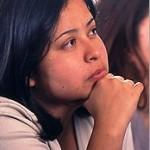After this past October’s rush of pink items for sale on the web and in stores, after the pink activities to promote awareness and support research came to an end, I read a few articles about how we had reached the saturation point on breast cancer awareness.
Really? I am here to say we will be a long time reaching saturation point in the “hoods” across the USA.
These days, I spend part of my time speaking to women living and working in socio-economically disadvantaged communities. Their lack of knowledge about breast cancer and their need to be vigilant about early detection can only be described as limited, at best.
Through an interpreter, I speak to women who do not speak English. There awareness is all but non-existent.

Recently I spoke to 400+ students, mostly women returning to the work force. Most live in neighborhoods where there is little breast cancer awareness, where October doesn’t bring a flood of breast cancer awareness activities, where few have the spare cash to purchase the pink products found in department stores outside their “hoods.”
During my talk, women shared about their mothers, grandmothers, sisters, friends who now had breast cancer and those who had died from it. Many of the women never made the connection between early intervention, detection and survival rates. Most didn’t go for annual pap smears, never mind have a comprehensive breast exam. A handful of those women over 40 had ever had a mammogram. Few knew that having a mom, sister, or grandma with breast cancer put them in a risk category.
Many of the women comfort themselves with myths that make them feel safe; the same myths that delay their seeking early detection services. They believe that if breast cancer isn’t in their family, they don’t need to be screened; they are safe.
They don’t know about the different types of breast cancer, or the treatments they will need if they should get breast cancer. They don’t know that, if caught early, the prognosis for survival is excellent. They don’t know that if their cancer is caught in a mammogram, before it can be felt, if it is small and hasn’t spread beyond the breast they may not need chemotherapy.
Most importantly, those who are uninsured, often the working poor, don’t know that can get a free mammogram that could save their lives.

